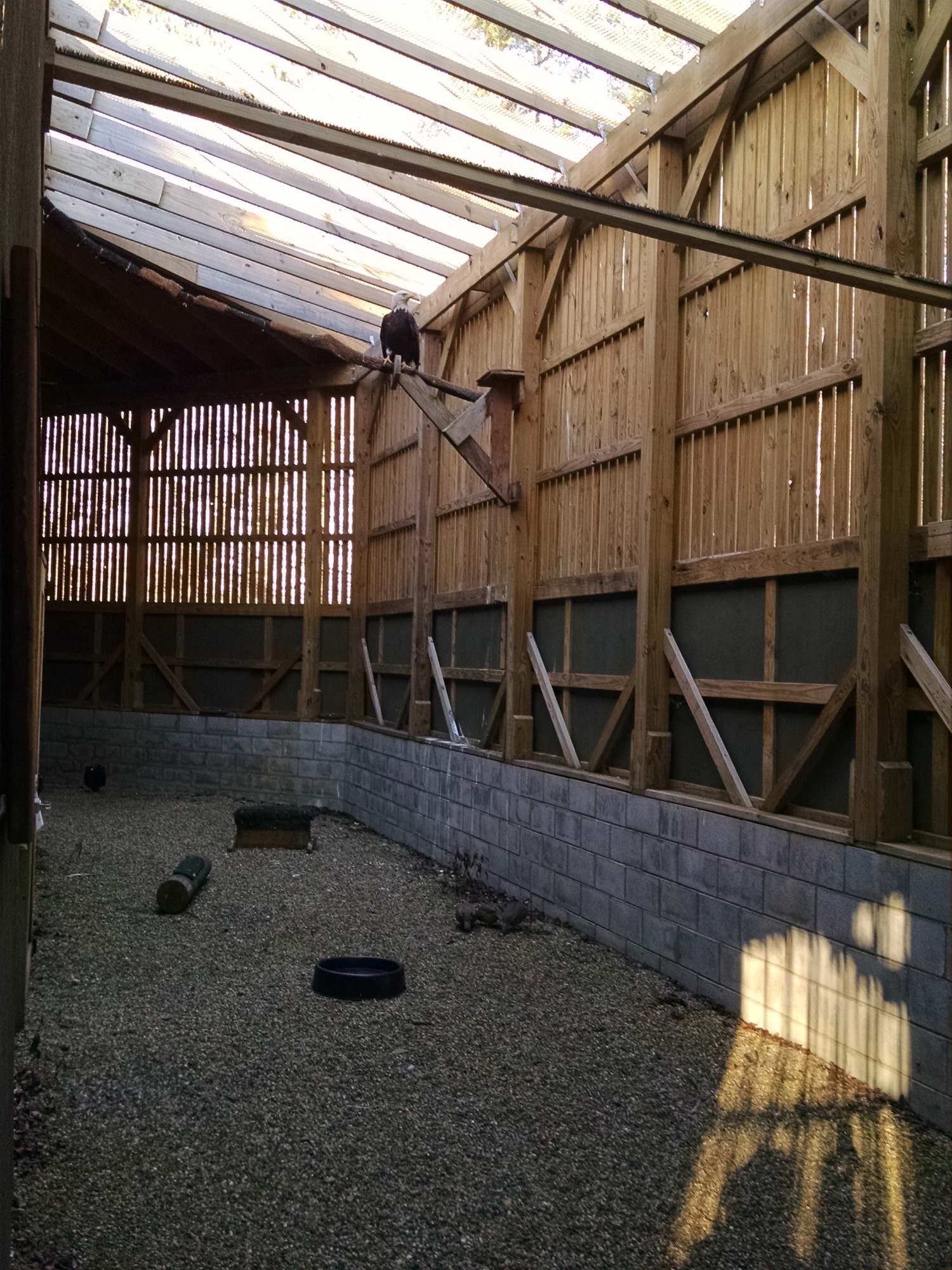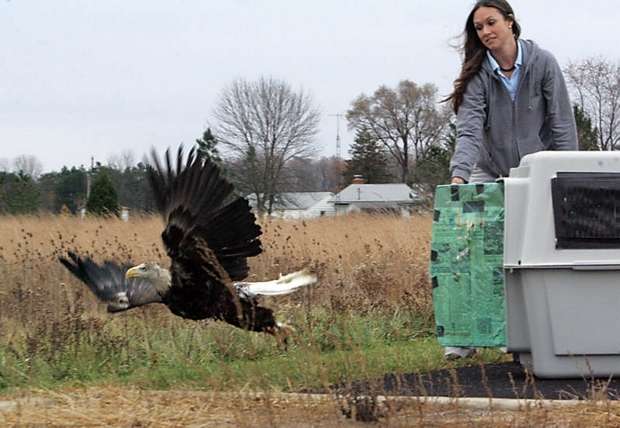What eats 30,000 meal worms a week, can digest anthrax, and can sing you a beautiful song? The birds at the Ohio Bird Sanctuary, of course!
Have you ever been to Mansfield? Chances are you’ve driven through it, but if you’ve only gone in October to see the reformatory, you are seriously missing out! Not too far off Route 30 is a beautiful sanctuary where an average of 300 birds are treated every year. When you go and visit, or if you are admitting an injured avian friend, walking into the center is like walking in to your old, familiar doctor’s office with someone to help you at reception, fun activities and things to learn all around, and a half door that allows you to watch patients being cared for in the examination room. The biggest differences are that 1. You will not get a shot at this facility (always a plus!), and 2. You are likely to run into Lucy as she meanders through the office - mind you, Lucy is not a vet, but a chicken.

And that’s what I love about Ohio Bird Sanctuary – in addition to the picturesque grounds, the animals entrusted into their care are guaranteed the best imaginable care. I was able to meet a few of their caretakers, busy performing check ups and providing food, as well as their patients. I think the pair of the tiniest hummingbirds I’ve ever seen was one of my favorites! I was also fortunate enough to be given a behind-the-scenes tour of what long-term avian rehabilitation looks like. Far from putting a cast on a broken wing, bird recuperation can be quite an intensive process, made more difficult by the fact that birds and humans don’t quite speak the same language. Part of the main building on the Sanctuary property is entirely dedicated to 6 recovery rooms for larger birds. Two of these rooms are windowless for the purposes of housing disoriented birds. Something I didn’t realize when I arrived was that neurological problems are becoming more frequent in insect-eating birds. The reason may be that the birds are accumulating pesticides from their food insects in other parts of the world where pesticides are less regulated. If this sounds familiar, you’ve probably heard of Rachel Carson.

As birds recover, OBS is faced with the decision as to whether or not the feathered friend will be able to fend for itself in the wild. In the cases where they can’t quite recover fully or if they have become too tame, they are welcomed as education or resident birds at the Sanctuary or other related organizations. But in the cases where a bird is destined to fly wild and free, they may move out back to the flight compound. Trust me, this structure is as cool as its name, I’m convinced that it must be the lair of a superhero. It’s a large circular facility that allows for birds to stretch their wings and fly round and round in an endless circle, allowing them to get back into tip-top flying shape before they leave the Sanctuary. (And if you want a good heart-warming moment, be sure to check out this video of an eagle release!)
And as if it wasn’t enough to care for the birds brought to the sanctuary – from citizens and other animal rescue groups – Ohio Bird Sanctuary is a champion of sharing their passion and enriching lives with science, nature, and exploration. Not only is the Sanctuary a beautiful, peaceful place for those who want an up-close and personal interaction with the resident animals on site, OBS also hosts countless events, including kids’ nature camps. If your kids are interested in “critters,” CSI, survivalism, and “yuck!” (and what kid isn’t?) you should probably check into the 3-day camps at OBS.
In all seriousness, getting back to my opening question, the creatures that spend time at the Ohio Bird Sanctuary are truly amazing (in case you were wondering, vultures are able to digest anthrax, among other bacteria and viruses. So fewer vultures = more diseases!). But they could not be treated – or fed 30,000 mealworms – without the help of so many volunteers and donors. And while the center welcomes donations of all kinds, you’d be surprised at how resourceful they are! Be sure to call the center, but they generally can always use donations of fish, mealworms, all sorts of things that you may have (or catch) and then you can feel good about sharing them with a worthy cause.
If you’d like more current information on happenings at the Sanctuary, visit their Facebook page.





